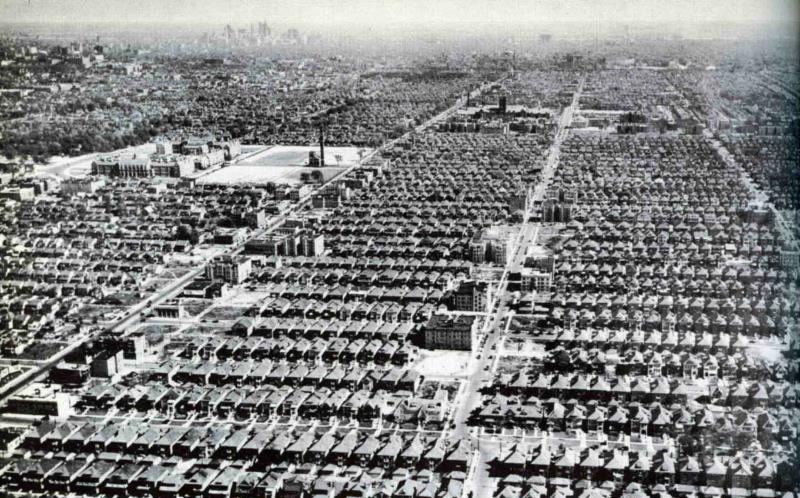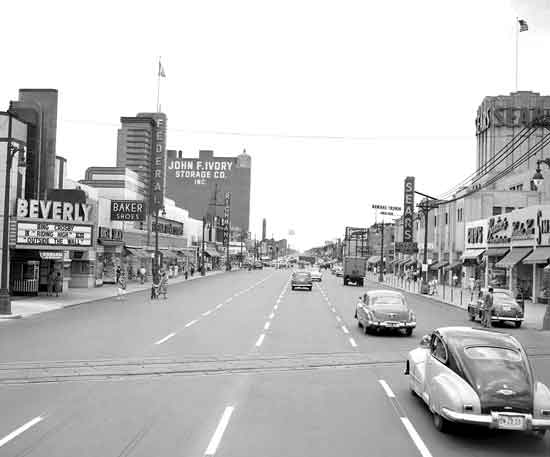"While millennials looking for jobs may tend to focus on larger cities like New York, Washington, Los Angeles or even Chicago, they might want to start looking at Detroit.
According to LinkedIn , Detroit is among the five surprising cities attracting millennial job seekers.
Coming in at No. 3, Detroit is ahead of Charlotte, N.C. and Cleveland, Ohio, and behind the Raleigh-Durham, N.C. area and Austin, Texas at No. 1."
http://www.wxyz.com/news/region/detroit/detroit-among-surprising-cities-attracting-millennials-looking-for-jobs-linkedin-says
Results 1 to 25 of 25
-
September-26-16, 01:35 PM #1
 DetroitYES Member
DetroitYES Member
- Join Date
- Jan 2011
- Posts
- 806
 Surprise, Surprise, Millennials are liking Detroit
Surprise, Surprise, Millennials are liking Detroit
-
September-28-16, 10:55 AM #2
 DetroitYES Member
DetroitYES Member
- Join Date
- Mar 2009
- Posts
- 1,157
-
September-28-16, 11:21 AM #3
 DetroitYES Member
DetroitYES Member
- Join Date
- Sep 2016
- Posts
- 179

Hola mis amigos en Detroit. I made the journey to Bogota Colombia. I read the Detroit downtown is picking up. How are the neighborhoods doing?
-
September-30-16, 10:37 PM #4
 DetroitYES Member
DetroitYES Member
- Join Date
- Sep 2009
- Posts
- 309

Mmmm ... yes. Once you get into the neighborhoods, Detroit doesn't have the same feel as, e.g., Philadelphia, Boston, or Chicago. Maybe it's because Detroit was developed relatively lately, but even in its heyday, large swathes of Detroit seem pretty much indistinguishable from adjacent areas of Warren, Redford, or Dearborn. For better or worse, Detroit just isn't that urban an experience.
-
September-30-16, 11:12 PM #5
 DetroitYES Member
DetroitYES Member
- Join Date
- Dec 2009
- Posts
- 1,905

This is true. I grew up in Birmingham, and my uncle's neighborhood [[on Muirland) could have been in Birmingham. Small lots, tree lined street, handsome brick and stone houses. Most Detroit residential neighborhoods [[not counting blight and decay) are structurally and aesthetically similar to our inner-ring suburbs.
-
October-01-16, 08:19 AM #6
 DetroitYES Member
DetroitYES Member
- Join Date
- Apr 2009
- Posts
- 7,049

SW Detroit, Cass Corridor / New Center Area and the Lower East Side were very much urban [[similar to the South Side of Chicago and Philadelphia). The average density was easily in the 20,000-30,000 per sq. mi range during the 40s - 70s in these neighborhoods. What Hamtramck is like today is essentially what many parts of Detroit were like.
Streets like Gratiot, Grand River, Mack, Kercheval, 12th Street, etc. were extremely pedestrian-oriented and in virtual gridlock during busy times of day.





You wouldn't be able to tell that now though because they've either emptied out the most or were bulldozed in the name of "urban renewal."Last edited by 313WX; October-01-16 at 08:35 AM.
-
October-01-16, 09:28 AM #7
 DetroitYES Member
DetroitYES Member
- Join Date
- May 2016
- Posts
- 1,331

That third image is jaw dropping.
-
October-01-16, 12:21 PM #8
 DetroitYES Member
DetroitYES Member
- Join Date
- Feb 2010
- Posts
- 3,901
-
October-01-16, 09:33 PM #9
 DetroitYES Member
DetroitYES Member
- Join Date
- Mar 2009
- Posts
- 1,045

#3...now that's urban.
Stromberg2
-
October-02-16, 08:59 AM #10
 DetroitYES Member
DetroitYES Member
- Join Date
- Nov 2013
- Posts
- 1,464

This explains a lot of things...

Like when I tell people that the only places to play as a kid was alley ways and in the streets. A few Parks, school lots and your dinky backyard.
Like the feeling when you left the house as a teenager you were at the mercy of the law and outlaws where ever you [[trespassed) went.
Could never venture off the roads without being on someone else's property.
And, now it seems, the last time I attempted to go to a metropark you have got to pay to get in.
Such is life in the big city.
-
October-03-16, 01:54 AM #11
 DetroitYES Member
DetroitYES Member
- Join Date
- Mar 2012
- Posts
- 902
-
October-03-16, 06:55 AM #12
 DetroitYES Member
DetroitYES Member
- Join Date
- Apr 2009
- Posts
- 3,387
-
October-03-16, 09:32 AM #13
 DetroitYES Member
DetroitYES Member
- Join Date
- May 2009
- Posts
- 862

And the outer neighborhoods of Boston, Chicago, and Philly are indistinguishable from its inner ring suburbs
You won't find two-family flat neighborhoods like the following in the suburbs [[except maybe GPP Cabbage Patch):
Near west side:
https://www.google.com/maps/@42.3791...8i6656!6m1!1e1
Dexter-Davison:
https://www.google.com/maps/place/De...6!4d-83.130855
At Detroit's peak population in 1950, it had a higher population density [[13,300/sq mile) than Baltimore and Washington, DC, at their peaks, and was not that much below St. Louis [[14,100/sq mile) and Philadelphia [[15,500/sq mile).Last edited by masterblaster; October-03-16 at 09:38 AM. Reason: Clarification
-
October-03-16, 10:01 AM #14
 DetroitYES Member
DetroitYES Member
- Join Date
- May 2009
- Posts
- 862

Here is an intersection demonstrating the former density of the near west side neighborhoods and the variety of housing types. Multiply this by block after block and you can get a picture the density
https://www.google.com/maps/@42.3750...8i6656!6m1!1e1Last edited by masterblaster; October-03-16 at 10:08 AM. Reason: correction
-
October-03-16, 09:12 PM #15
 DetroitYES Member
DetroitYES Member
- Join Date
- Apr 2009
- Posts
- 7,049

Below is an image of another neighborhood near Hamtramck. If you didn't know any better, you'd swear it was the South Side of Chicago or Philadelphia.
Do the same as you suggested [[multiply by several blocks) and you get the same picture.
https://www.google.com/maps/@42.4066...7i13312!8i6656
Unfortunately, when the below keeps happening over and over again, you tend to lose traces of the above ever existing.
https://www.google.com/maps/@42.4175...7i13312!8i6656Last edited by 313WX; October-03-16 at 09:15 PM.
-
October-03-16, 10:59 PM #16
 DetroitYES Member
DetroitYES Member
- Join Date
- Apr 2009
- Posts
- 2,773

Another thing to keep in mind about this is that the vast majority of housing units being added in the city now are multifamily. Going forward, Detroit is very likely to have a bigger portion of its area in forms that are more typically urban, and a substantially bigger portion of the population will be living in those areas.
-
October-04-16, 02:50 PM #17
 DetroitYES Member
DetroitYES Member
- Join Date
- May 2009
- Posts
- 3,501

Last edited by emu steve; October-04-16 at 02:59 PM.
-
October-04-16, 03:07 PM #18
 DetroitYES Member
DetroitYES Member
- Join Date
- Apr 2009
- Posts
- 2,773

I see at least one permit issued for a new single family dwelling, so I guess someone probably is. I don't think it is a substantial number. There's probably some way to count them up, but because of the way they do the descriptions I can't be sure I have found all of them.
-
October-05-16, 05:26 AM #19
 DetroitYES Member
DetroitYES Member
- Join Date
- May 2009
- Posts
- 3,501

Thanks.
I think you have pointed out the 'future' or 'future growth' of Detroit. It will continue to be multi-family housing primarily in areas such as downtown, Midtown, corktown, river front, etc.
That said, is there much single family housing being built in Dearborn, Southfield, etc.? Probably not.
I think we can see a pattern for the entire region, i.e., Detroit, close in suburbs, further out suburbs.Last edited by emu steve; October-05-16 at 05:30 AM.
-
October-05-16, 10:11 AM #20
 DetroitYES Member
DetroitYES Member
- Join Date
- Oct 2009
- Posts
- 599

Pretty sure that this image is of the Dexter Linwood neighborhood from the north facing south. Linwood is the main thoroughfare running from the lower left through the center of the image. Upper left institutional building is the former Detroit Central HS complex. Downtown is near the horizon edge of the image.
-
October-05-16, 11:16 AM #21
 DetroitYES Member
DetroitYES Member
- Join Date
- Mar 2009
- Posts
- 559
-
October-05-16, 07:22 PM #22
 DetroitYES Member
DetroitYES Member
- Join Date
- Feb 2014
- Posts
- 2,239

Getting back to the topic of the thread.
Without a doubt Milennials have played a tremendous role in the resurgence of downtown and adjacent neighborhoods whether in the desire to attract them by business or meeting their needs as they have arrived. If the city as a whole can improve substantially remains to be seen until the reigns of power have been turned over to them. Frankly it can't happen fast enough, it would almost be impossible for them to do any worse than the last few generations.Last edited by ABetterDetroit; October-05-16 at 09:30 PM.
-
October-06-16, 01:12 AM #23
 DetroitYES Member
DetroitYES Member
- Join Date
- Mar 2012
- Posts
- 902

I think you're right, and the density hasn't entirely gone away [[I hope the link keeps its orientation): https://goo.gl/maps/wj4gp2ekVPF2
-
October-06-16, 07:14 AM #24
 DetroitYES Member
DetroitYES Member
- Join Date
- Mar 2009
- Posts
- 6,543

The attraction of new high tech jobs and demand for housing lure millennials to Gilberttown Detroit. While poor low-income folks that lives of welfare checks and food stamps hit 8 Mile Rd. and to the suburbs.
-
October-06-16, 07:16 AM #25
 DetroitYES Member
DetroitYES Member
- Join Date
- Mar 2009
- Posts
- 6,543
Welcome to DetroitYES! Kindly Consider Turning Off Your Ad BlockingX
DetroitYES! is a free service that relies on revenue from ad display [regrettably] and donations. We notice that you are using an ad-blocking program that prevents us from earning revenue during your visit.
Ads are REMOVED for Members who donate to DetroitYES! [You must be logged in for ads to disappear]
Ads are REMOVED for Members who donate to DetroitYES! [You must be logged in for ads to disappear]
DONATE HERE »
And have Ads removed.
And have Ads removed.





 Reply With Quote
Reply With Quote



Bookmarks